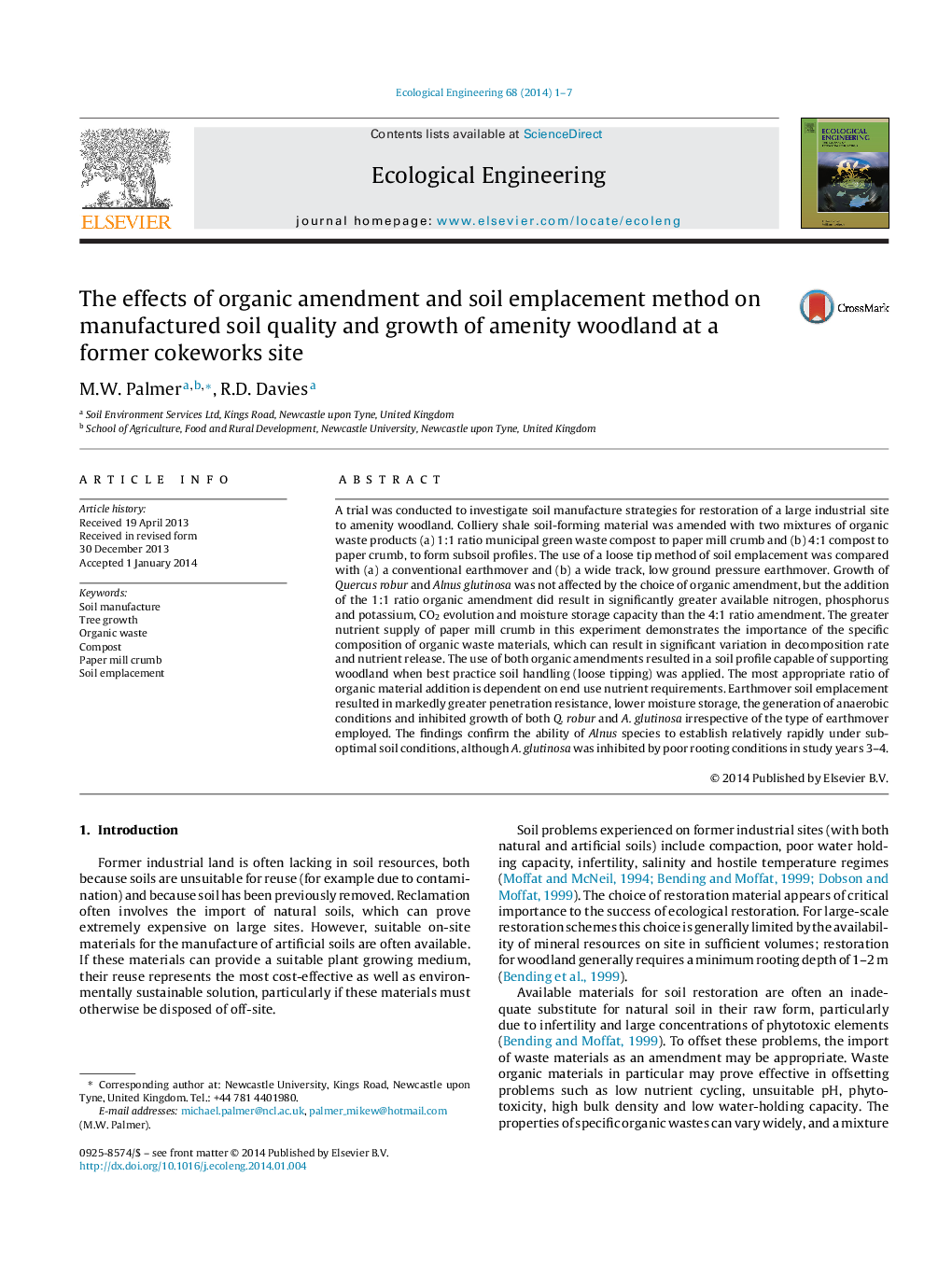| Article ID | Journal | Published Year | Pages | File Type |
|---|---|---|---|---|
| 6302270 | Ecological Engineering | 2014 | 7 Pages |
Abstract
A trial was conducted to investigate soil manufacture strategies for restoration of a large industrial site to amenity woodland. Colliery shale soil-forming material was amended with two mixtures of organic waste products (a) 1:1 ratio municipal green waste compost to paper mill crumb and (b) 4:1 compost to paper crumb, to form subsoil profiles. The use of a loose tip method of soil emplacement was compared with (a) a conventional earthmover and (b) a wide track, low ground pressure earthmover. Growth of Quercus robur and Alnus glutinosa was not affected by the choice of organic amendment, but the addition of the 1:1 ratio organic amendment did result in significantly greater available nitrogen, phosphorus and potassium, CO2 evolution and moisture storage capacity than the 4:1 ratio amendment. The greater nutrient supply of paper mill crumb in this experiment demonstrates the importance of the specific composition of organic waste materials, which can result in significant variation in decomposition rate and nutrient release. The use of both organic amendments resulted in a soil profile capable of supporting woodland when best practice soil handling (loose tipping) was applied. The most appropriate ratio of organic material addition is dependent on end use nutrient requirements. Earthmover soil emplacement resulted in markedly greater penetration resistance, lower moisture storage, the generation of anaerobic conditions and inhibited growth of both Q. robur and A. glutinosa irrespective of the type of earthmover employed. The findings confirm the ability of Alnus species to establish relatively rapidly under sub-optimal soil conditions, although A. glutinosa was inhibited by poor rooting conditions in study years 3-4.
Keywords
Related Topics
Life Sciences
Agricultural and Biological Sciences
Ecology, Evolution, Behavior and Systematics
Authors
M.W. Palmer, R.D. Davies,
